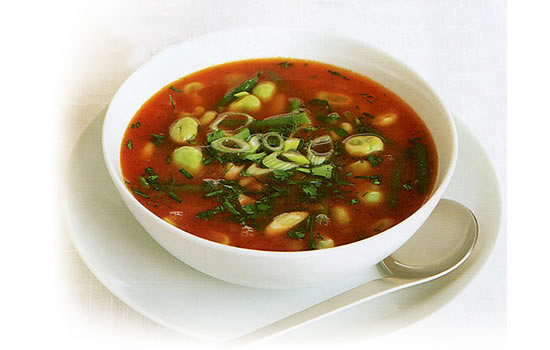Soups can be very healthy and notorious. A bowl of soup easily adds vegetables, grains, legumes, and beans to the day-to-day diet.
Also, this is a quite inexpensive and convenient option to get the recommended intake of fiber, vitamins, minerals, and proteins in the diet.
A savory and hot bowl of soup is both filling and comforting and will soon warm you up on those chilly winter nights. Below are some of the great qualities of eating soup:
- Curb your appetite – Eating a vegetable or broth-based soup as a first course before the main meal often means fewer calories. But, this doesn’t apply to high-fat or creamy soups. Calorie intake is cut by nearly 20% when a meal starts with a first course of soup.
- Slow down your eating time – A bowl of soup can involve chewing, tasting, smelling, slurping, spooning, and swallowing, which is certain to help slow down eating. A slow eater is more inclined to consume fewer calories and notice a full feeling that much sooner.
- Stimulate the senses – A warm bowl of soup can help to stimulate the senses and adds great please with visual interest, enjoyable temperatures, tastes, and aromas.
Caution
Extra caution should be taken with the store-bought canned soups because they are loaded with fat and sodium. Read the ingredients or nutrition label to help determine the quality of the soup. A 1-cup serving should include the following:
- Calories: 250 or less (control the diet)
- Sodium: 600mg of less (manage the blood pressure)
- Fiber: 3 grams or more (fill the stomach)
- Fat: 3 grams of less (protect the heart)
Besides taking these health conscious steps, you can also enhance the filling power, flavor and nutrition of the soup by taking the following action:
- Include spices and herbs to help up the flavor and taste. Trial salt-free seasoning, ginger, garlic, oregano, parsley, basil and pepper until a preferred taste is achieved.
- Include protein and calcium by making the soup dish with calcium-fortified soy milk, non-fat dry milk powder, evaporated skim milk, or skim milk in place of cream, whole milk, or water.
- Include leftover or frozen vegetables to help up the concentration of vitamins, minerals, and fiber in the soup. Most soups can accept potatoes, carrots, celery, corn, broccoli, and spinach.
- Include whole grains and beans to increase the protein and fiber content, while making the soup more filling. Preferred ingredients include whole wheat pasta, barley, brown rice, lima beans, lentils, beans, and potatoes.
Weight loss program
Soup is not only easy to make and delicious, it is helpful in a weight loss program. Eating stews or soups offer a quick and effective way to fill the stomach because of the high fluid intake. This means soups can fill you up on a lower amount of calories compared to something like a casserole (much lower water content). In fact, starting a meal with a bowl of soup can reduce the calorie intake by nearly 20%.
Also, the majority of healthy soups includes vegetables, lean protein, and whole grains to increase the chance of the body enjoying a complete meal.

Yum! So many great options with soup. I am definitely going to attempt a curried cauliflower soup in the near future, which sounds fantastic. Thanks for sharing.